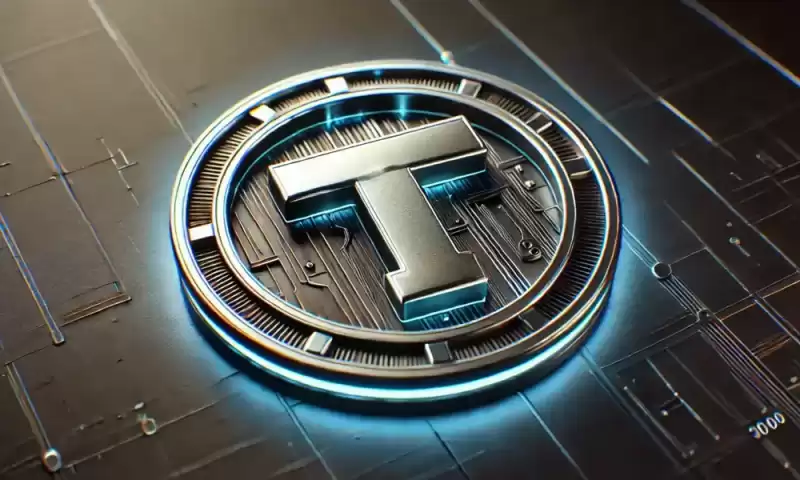 |
|
 |
|
 |
|
 |
|
 |
|
 |
|
 |
|
 |
|
 |
|
 |
|
 |
|
 |
|
 |
|
 |
|
 |
|
I'm always interested in novel tokenomics. It's always fascinating to see how crypto protocols align incentives, and sometimes they look very tempting

Author: donn
Compiled by: TechFlow
I’m always interested in novel tokenomics. It’s always fascinating to see how crypto protocols align incentives, and sometimes they look very tempting — until they inevitably fall apart. So when Bittensor launched its dynamic $TAO (dTAO) system on Valentine’s Day, I was immediately intrigued.
The idea is simple: provide a new, more “fair” way to distribute TAO issuance between subnets.
But just one month later, problems emerged. It turns out that seemingly perfect designs don’t always work as expected in a free market.
How dTAO works
Here is a simplified review of how dTAO works:
Each subnet has its own subnet token ($SN), which exists in the form of a native TAO-SN UniV2 type pool. Confusingly, although users are "staking" TAO in exchange for SN, this is actually no different from "exchanging" TAO for SN in terms of functionality. The only difference is that users cannot add liquidity to the liquidity pool or trade between subnet tokens directly (e.g. SN1 → SN2), but can use TAO as an intermediary (SN1 → TAO → SN2).
The issuance of TAO is allocated in proportion to the price of the subnet SN token. To smooth price fluctuations or prevent price manipulation, the system uses a moving average price.
The SN token itself also has a high issuance, with a supply cap of 21 million, similar to TAO and BTC. A portion of SN is allocated to the TAO-SN liquidity pool, and the rest is allocated to the stakeholders of the subnet (miners, validators, subnet owners). The amount of SN allocated to the TAO-SN pool is to balance the issuance of TAO in the pool, so that the price of SN (in TAO units) remains stable while increasing liquidity.
However, if the above calculation results show that the number of SNs required by the subnet exceeds the maximum issuance of SNs (based on the issuance curve of SNs), the issuance of SNs will be limited to the maximum value, and the price of SNs (in TAO units) will rise.
The core assumption of this mechanism is that subnets with higher market capitalization create more value for the Bittensor network, so they should receive more TAO issuance.
However, the reality is that the highest priced tokens in the crypto market are often those with the most attention, hype, Ponzi characteristics, and marketing resources. This is why L1 public chains and memecoins usually have the highest relative valuations.
Although the starting point of the mechanism design is good, assuming that subnets that generate value by generating revenue will use part of the revenue to repurchase SN tokens, thereby pushing up prices and obtaining more TAO issuance, this idea is somewhat naive.
Subnets filled with meme coins and out-of-control token economics
Prior to the launch of dTAO, I discussed with a number of crypto analysts the apparent flaws in the dTAO token economics — namely that higher market cap ≠ higher revenue or greater value creation.
But I didn’t expect that this theory would soon be verified in practice. The free market worked in a “beautiful” way.
Just before the upgrade, an anonymous person took over subnet 281 and turned it into a memecoin subnet called “TAO Accumulation Corporation” (“LOL Subnet” for short). This obviously has nothing to do with AI.
From the now deleted Github page:
Miners do not need to run any code, and validators score them based on the number of subnet tokens they hold. The more tokens a miner holds, the higher the issuance they receive.
What actually happens is: speculators buy SN28 tokens → SN28 price rises → SN28 gets more TAO issuance → If the issuance limit of subnet tokens is exceeded, SN28 price continues to rise → SN token issuance is distributed proportionally to "miners" holding SN → People buy more SN to get more TAO → Price rises further → Ponzi cycle continues.
As a result, TAO issuance officially began to fund… memes! At one point, the SN28 subnet even became the seventh-largest subnet by market cap.
But why did SN28 fail to take over Bittensor? Centralization saved the situation
In just a few days, the Opentensor Foundation used its root stake to run custom validator code, which essentially incentivises people to sell SN28 tokens, causing their price to plummet 98% in a few hours.
SN28 subnet tokens plummet 98% following Opentensor Foundation action
Essentially, the Opentensor Foundation acts as a centralized entity that prevents the free market from exploiting the dTAO mechanism. This centralized intervention is currently possible because we are in a slow transition period from
Disclaimer:info@kdj.com
The information provided is not trading advice. kdj.com does not assume any responsibility for any investments made based on the information provided in this article. Cryptocurrencies are highly volatile and it is highly recommended that you invest with caution after thorough research!
If you believe that the content used on this website infringes your copyright, please contact us immediately (info@kdj.com) and we will delete it promptly.
-

-

-

-

-

-

-

-

- Converge Blockchain:- Carlos Domingo, founder and CEO of Securitize, has announced the next step for their new EVM blockchain.
- Apr 19, 2025 at 02:00 pm
- Announcing in a X post, CEO Dormingo said that the to-be launched blockchain will leverage Arbitrum and Celestia tech to develop their RWA-focused chain.
-

- Relm Insurance Receives UAE Central Bank Approval for Its Web3-focused Insurance Solutions
- Apr 19, 2025 at 01:55 pm
- Relm Insurance, recognized as the only insurer exclusively focused on emerging industries, along with Liva Insurance, a key insurance provider in the Gulf Cooperation Council (GCC), has received official approval from the UAE Central Bank for their jointly developed insurance solutions tailored for Web3 businesses.



























































